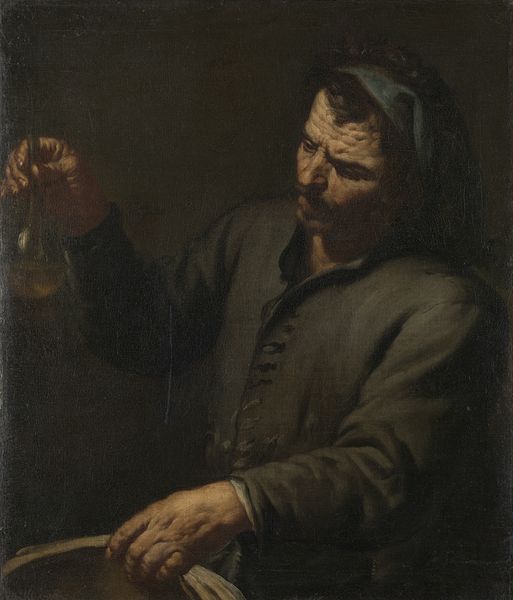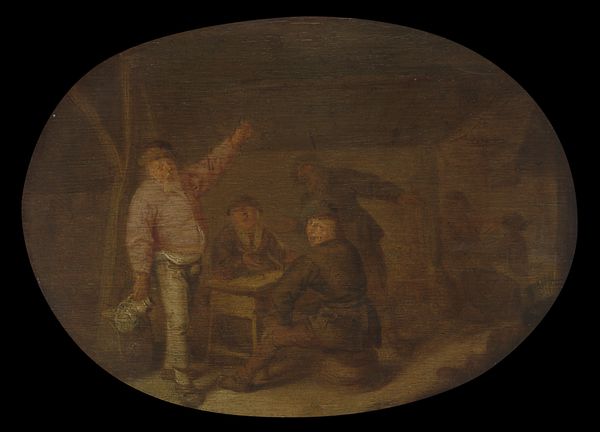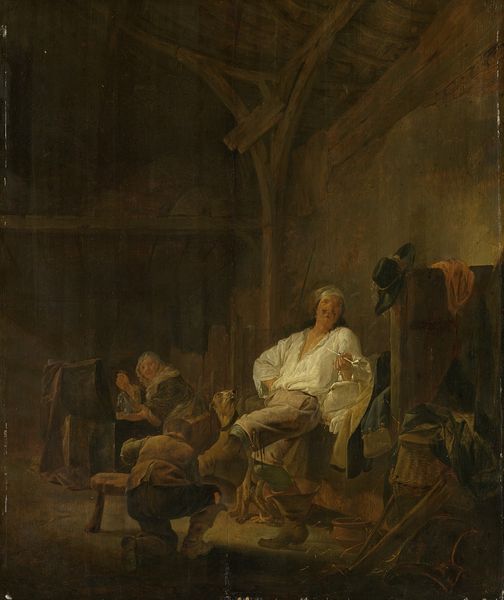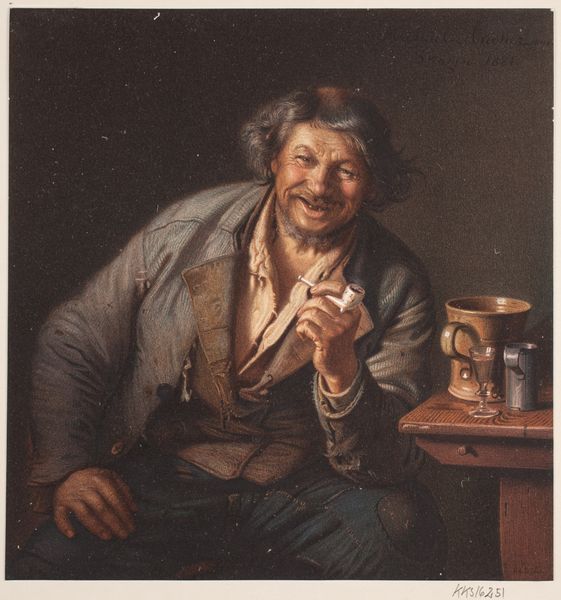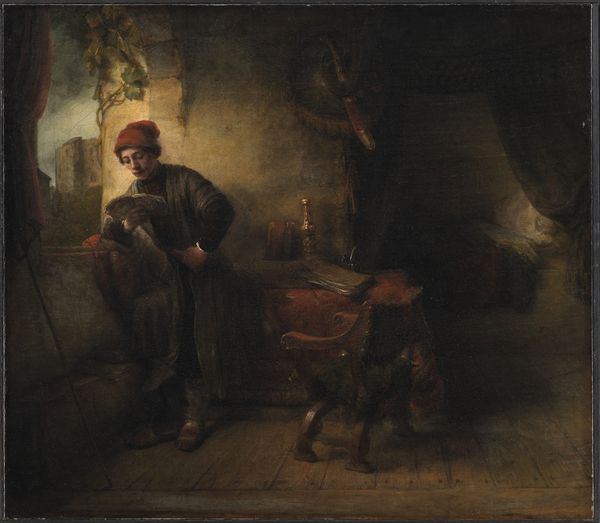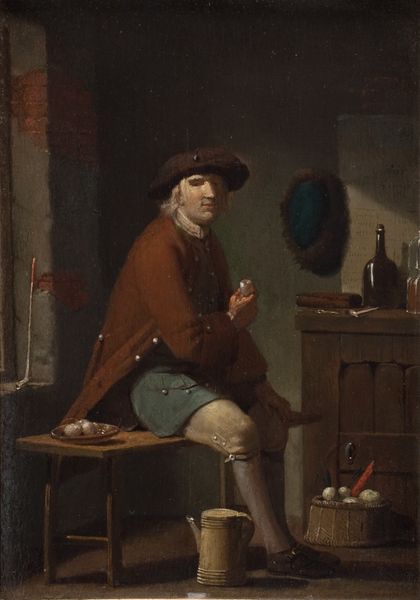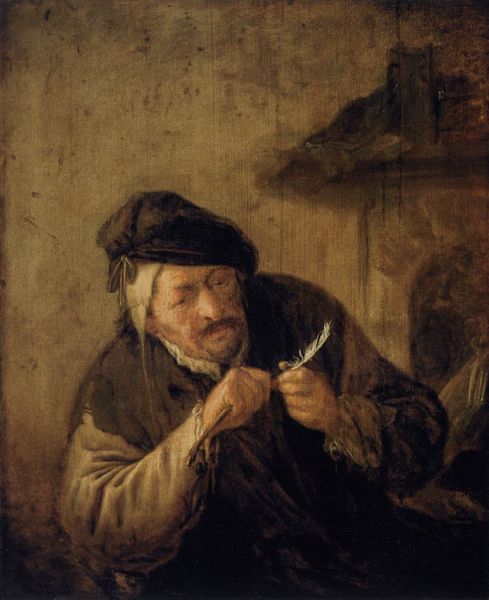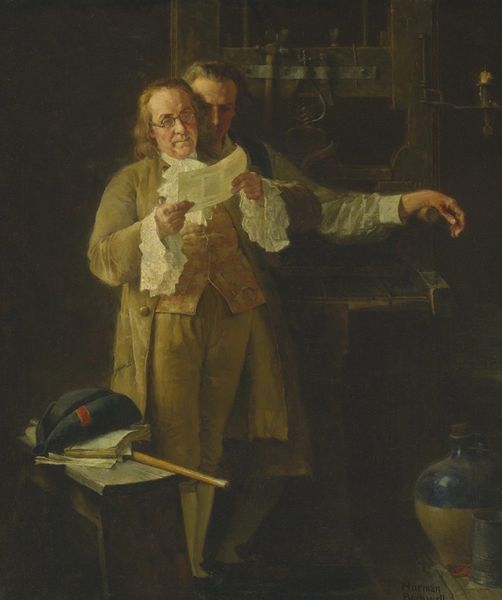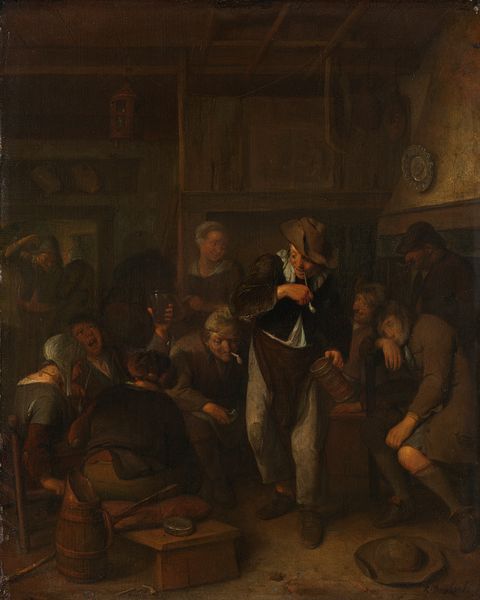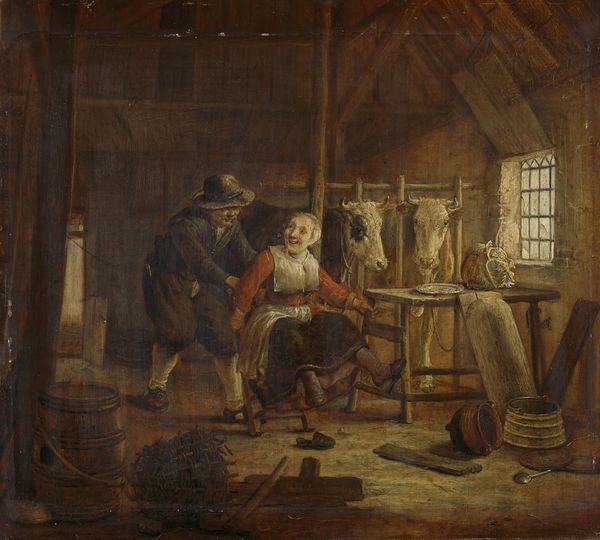
oil-paint
#
portrait
#
dutch-golden-age
#
oil-paint
#
oil painting
#
genre-painting
Dimensions: height 17 cm, width 13.5 cm, depth 6 cm
Copyright: Rijks Museum: Open Domain
Curator: Pieter Hermansz. Verelst's, “The Herring-Eater”, created sometime between 1628 and 1650, captures a moment of everyday life, rendered in oil paint. What strikes you first about it? Editor: The palette—so restrained. Earthy browns and grays mostly, giving it almost the feel of a monochrome study despite the subtle gradations. You can almost smell the cured fish emanating from the scene, a reminder of subsistence economies and limited resources. Curator: Yes, the painting has such an intimate feeling, wouldn’t you agree? A close-up, personal moment captured between the man and his food. He looks so absorbed, doesn’t he? The herringbone texture of his headwear, against the simple table and pot, everything adds up to a really gentle picture. Editor: And consider how common herring was—a staple for the working class during that era. Verelst highlights, I think, the materiality of that daily life. It grounds the era through the fish-scales that reflect on the fisherman’s weathered skin. His whole purpose revolves around the cycles of capture and preservation. Curator: It also feels like the painting appreciates those cycles, don't you think? Perhaps it appreciates the beauty that emerges when survival is intertwined with everyday habits? To be able to make something sacred out of nothing other than our mundane existences – and also maybe the humble man appreciates how beautiful a piece of herring truly is! Editor: Absolutely. The way he holds it, so carefully – it elevates the ordinary labor, acknowledging not just the act of consumption, but all that went into it. Also consider the tools he might’ve been using: from nets, and the fisherman’s careful hands that built this composition from sea to the finished product. Curator: We are so removed from seeing where our food comes from today. And art like this helps us connect with the daily grind. Verelst reminds us with deep affection about how important those rhythms are! I do love a little reflection in art; thank you for such great context on its construction and class implications. Editor: My pleasure. Understanding the production helps me appreciate how the past operates.
Comments
No comments
Be the first to comment and join the conversation on the ultimate creative platform.
